Sufang Zhang
Seeing through the Mask: Multi-task Generative Mask Decoupling Face Recognition
Nov 20, 2023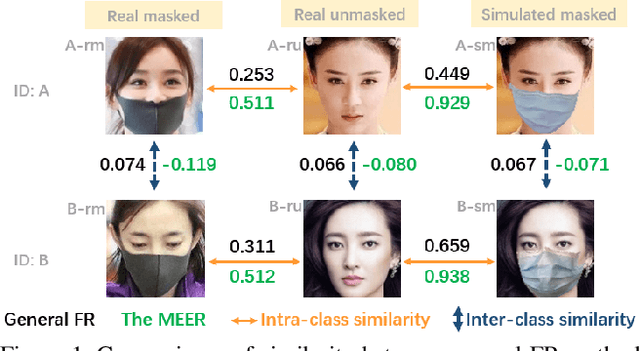

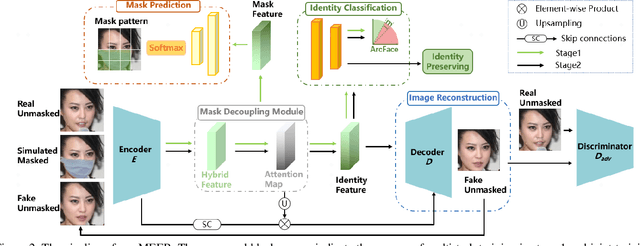

Abstract:The outbreak of COVID-19 pandemic make people wear masks more frequently than ever. Current general face recognition system suffers from serious performance degradation,when encountering occluded scenes. The potential reason is that face features are corrupted by occlusions on key facial regions. To tackle this problem, previous works either extract identity-related embeddings on feature level by additional mask prediction, or restore the occluded facial part by generative models. However, the former lacks visual results for model interpretation, while the latter suffers from artifacts which may affect downstream recognition. Therefore, this paper proposes a Multi-task gEnerative mask dEcoupling face Recognition (MEER) network to jointly handle these two tasks, which can learn occlusionirrelevant and identity-related representation while achieving unmasked face synthesis. We first present a novel mask decoupling module to disentangle mask and identity information, which makes the network obtain purer identity features from visible facial components. Then, an unmasked face is restored by a joint-training strategy, which will be further used to refine the recognition network with an id-preserving loss. Experiments on masked face recognition under realistic and synthetic occlusions benchmarks demonstrate that the MEER can outperform the state-ofthe-art methods.
A Survey of Face Recognition
Dec 26, 2022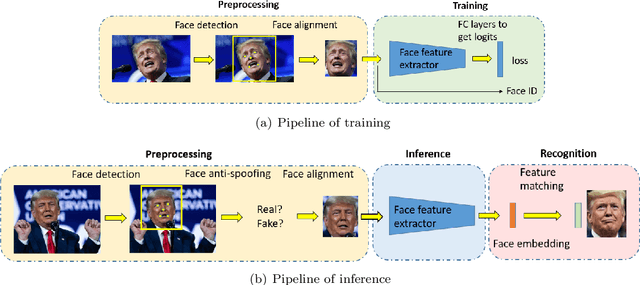
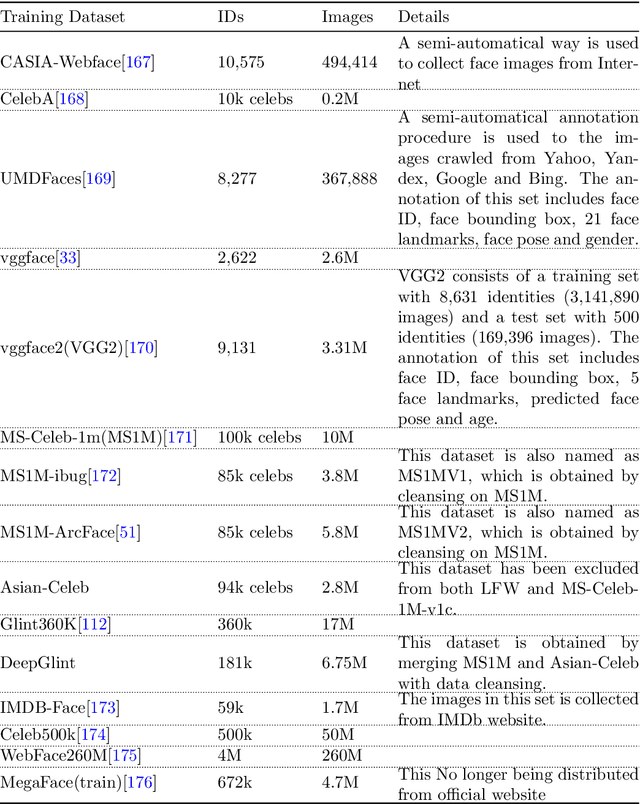
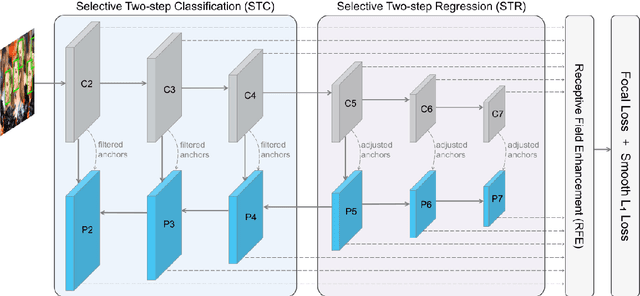
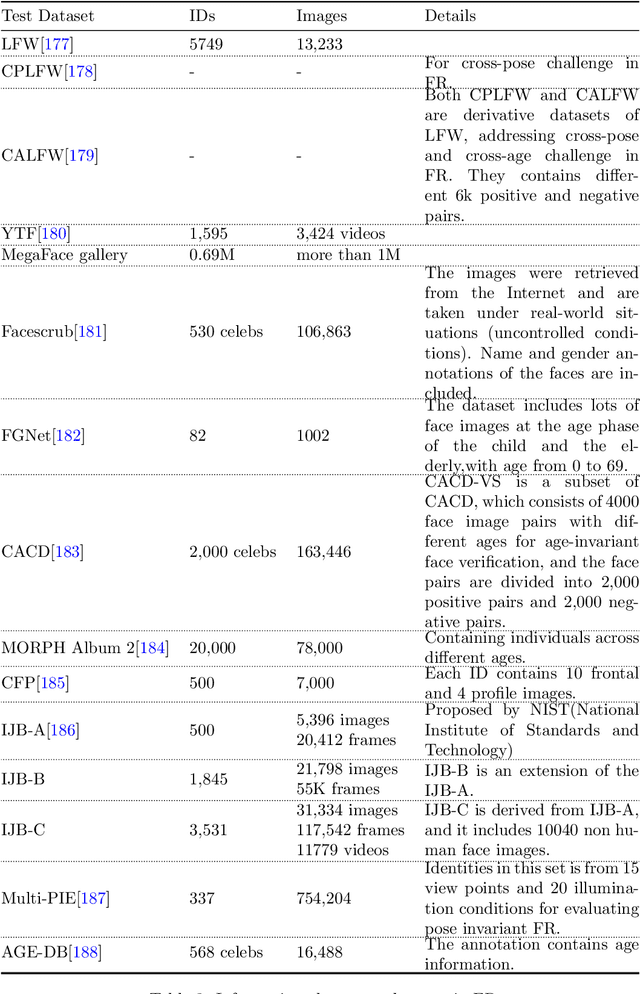
Abstract:Recent years witnessed the breakthrough of face recognition with deep convolutional neural networks. Dozens of papers in the field of FR are published every year. Some of them were applied in the industrial community and played an important role in human life such as device unlock, mobile payment, and so on. This paper provides an introduction to face recognition, including its history, pipeline, algorithms based on conventional manually designed features or deep learning, mainstream training, evaluation datasets, and related applications. We have analyzed and compared state-of-the-art works as many as possible, and also carefully designed a set of experiments to find the effect of backbone size and data distribution. This survey is a material of the tutorial named The Practical Face Recognition Technology in the Industrial World in the FG2023.
 Add to Chrome
Add to Chrome Add to Firefox
Add to Firefox Add to Edge
Add to Edge